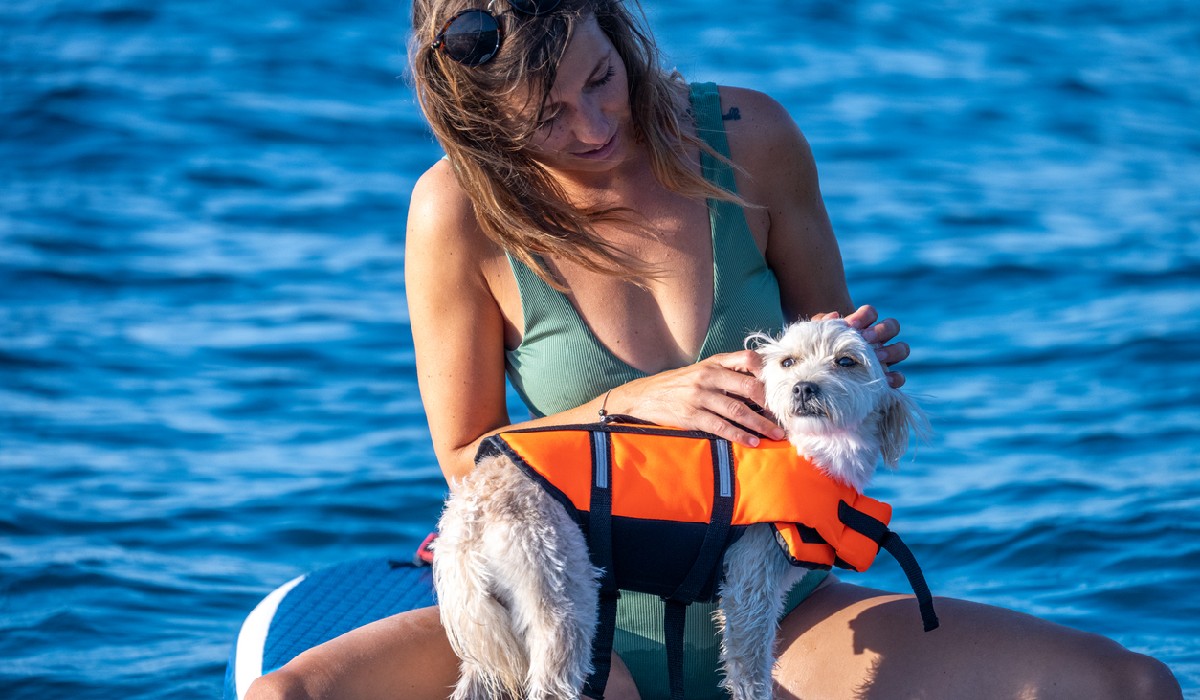From Safety Tips to Supplies: Here Is How To Teach a Dog To Swim

Swimming can be an excellent activity for you and your furry friend. It can provide a full-body workout and is a fun way to bond with your pup. This post will provide you with everything you need to know on how to teach a dog to swim, including safety tips and recommended supplies.
We’ll discuss the most ideal way to introduce your dog to water, the importance of having a flotation device, and the importance of not overworking your pup while they’re in the water. We’ll also provide tips and tricks on how to get your dog excited about swimming and how to keep them safe while they’re in the water. So, if you’re ready to get your pup splashing around in their dog swimsuit, let’s get started.
Preparing Your Dog for a Swim
The most important factor when teaching your pup to swim is patience. Start by providing your puppy with positive reinforcement and plenty of praise. As your dog becomes more comfortable, gradually increase the depth or the duration of the activity. It is also critical to create a safe and comfortable atmosphere, as water activities can become stressful for some dogs.
Your pup must make their own decisions when it comes to swimming. If you notice any signs of distress, such as shaking, panting, or reluctance to move forward, stop immediately and take your pup back onto dry land. Before engaging in water activities, make sure that your dog is physically fit and healthy enough for them to be able to make it back onto dry land without assistance.
Proper Equipment and Supplies
When choosing a life jacket for your dog, you want one that fits snuggly around their body but still allows them plenty of freedom. Look for features such as bright colors, which will make it easier for others to keep an eye on them in large areas of open water.
Pool noodles can be used on their own or with other equipment to help your dog stay afloat while they’re learning new skills or practicing existing ones. By cutting the noodle into smaller pieces, you can even create makeshift buoys or floats, which act as helpful indicators when teaching new commands or behaviors while they’re swimming.
Using toys while teaching your pup to swim can make all the difference in helping them feel more confident and comfortable around water activities. Make sure that all toys used are safe for use in the pool.
Establishing the Basics
Before getting into the pool, give your pup plenty of time to relax and sniff their surroundings so that they become familiar with their environment. Encourage them gradually by lowering yourself into the pool first before holding out one arm and allowing them to enter at their speed.
Once they become comfortable with being underwater, use positive reinforcement like treats and verbal praise to start introducing basic commands like “swim” or “paddle,” which will help teach them how to move through the water more efficiently. When they get comfortable enough, you can let go as they paddle around on their own with their life jacket on.
Safety Tips for Swimming
Always have limits on how far your dog can swim. Always keep your eyes on them when they are swimming, and be firm when they cross boundaries. Keeping track of water temperature ahead of time minimizes the risk of hypothermia or other conditions. You should also know when to end a swimming session. As a good rule of thumb, keep sessions to 20-30 minutes with rest periods, and make sure your pup is always properly hydrated.
Conclusion
Teaching a dog to swim can be a great way to exercise and bond with your pup while keeping them safe. This guide covers all of the fundamental aspects of swimming with your pup, including safety tips and recommendations. We discussed the importance of introducing your pup to the water slowly, having the right safety equipment, and providing physical contact and positive reinforcement while teaching them the basics. With the tips in this guide, you and your pup will be well-equipped to have a safe and enjoyable swim session.
